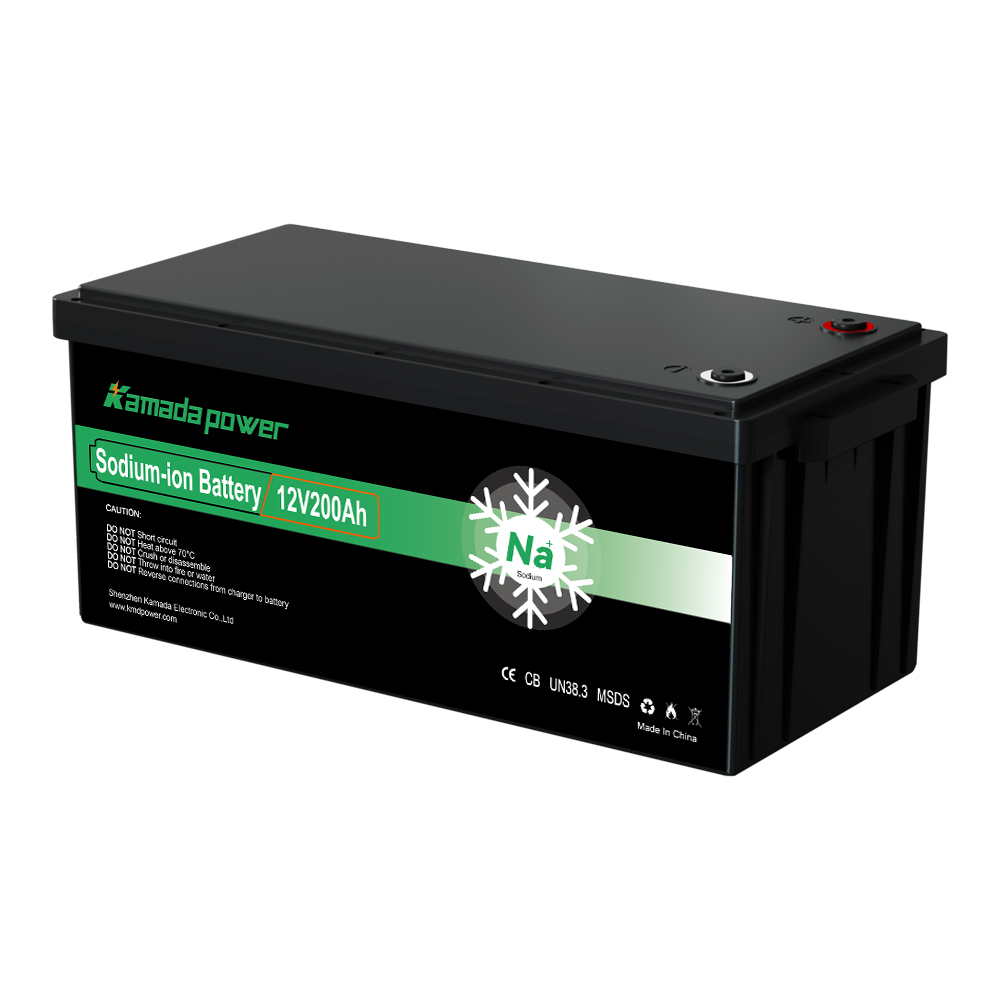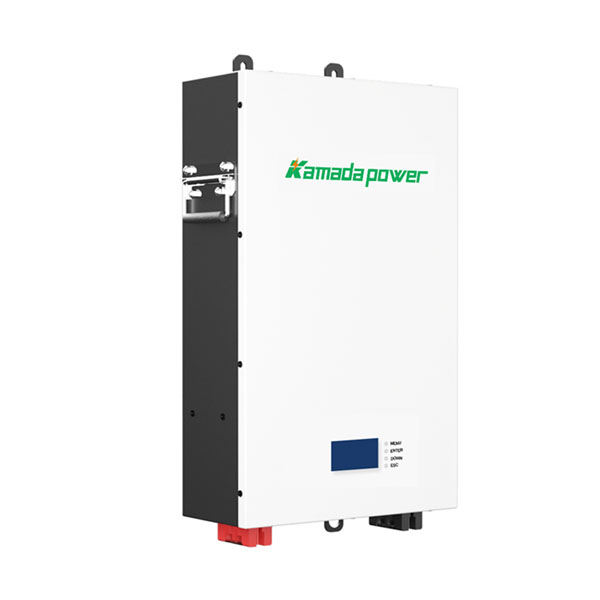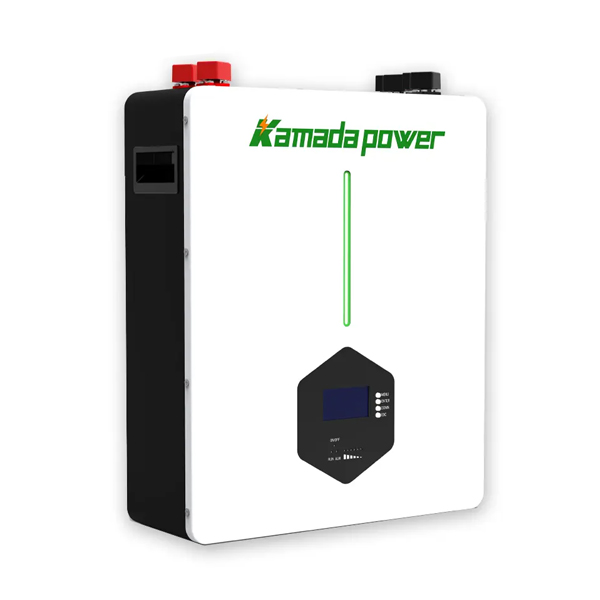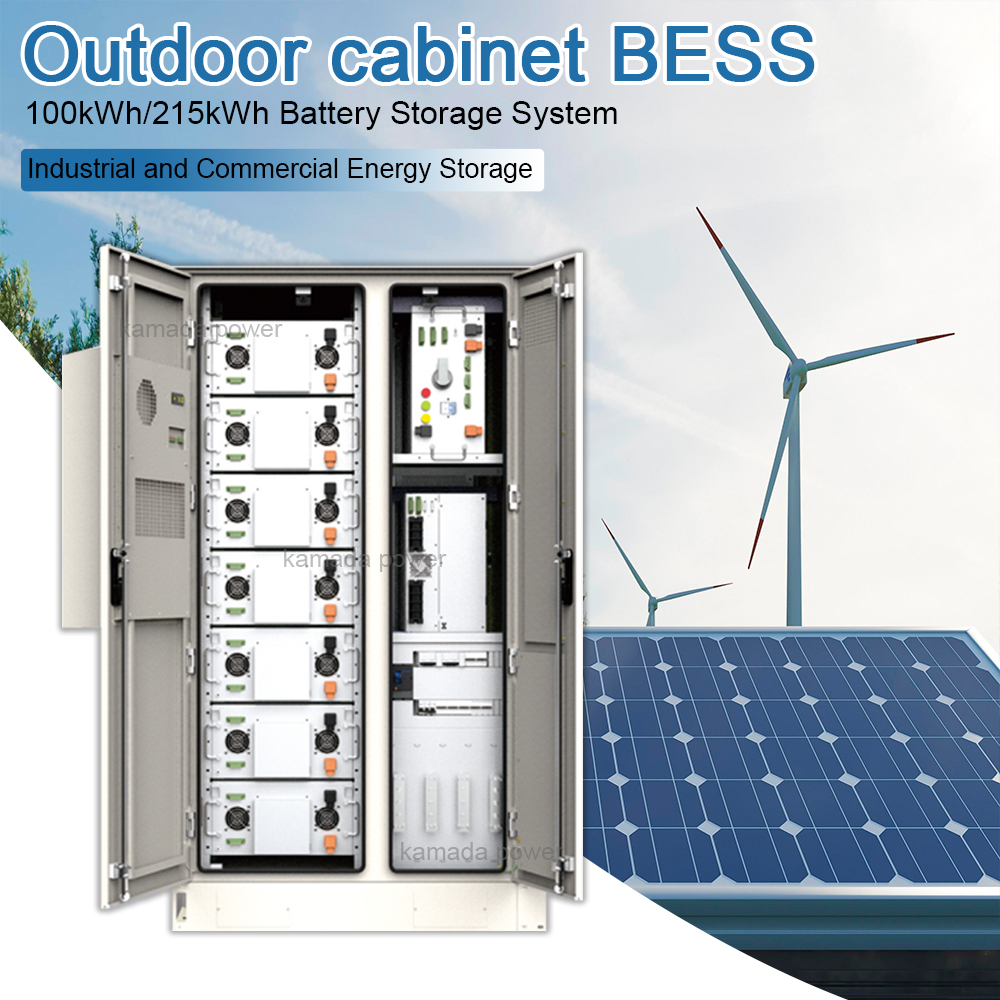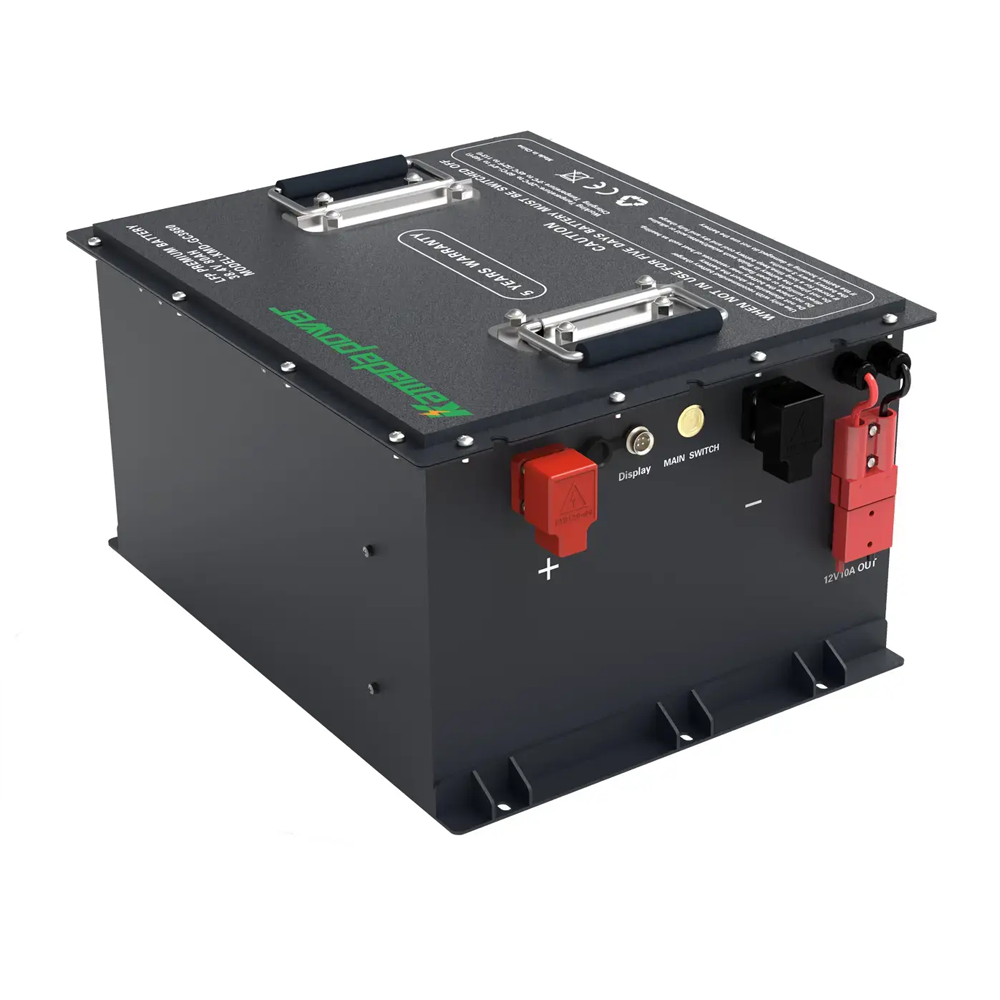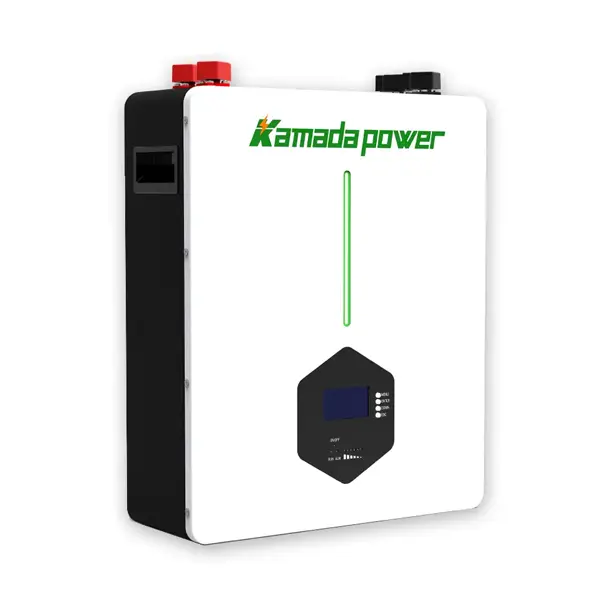Introduction
Lithium Ion vs Lithium Polymer Batteries – Which Is Better? In the rapidly evolving world of technology and portable energy solutions, lithium-ion (Li-ion) and lithium polymer (LiPo) batteries stand out as two leading contenders. Both technologies offer distinct advantages and have their unique applications, setting them apart in terms of energy density, cycle life, charging speed, and safety. As consumers and businesses alike navigate their energy needs, understanding the differences and advantages of these battery types becomes crucial. This article delves into the intricacies of both battery technologies, offering insights to help individuals and businesses make informed decisions tailored to their specific requirements.
What Are the Differences Between Lithium Ion vs Lithium Polymer Batteries?
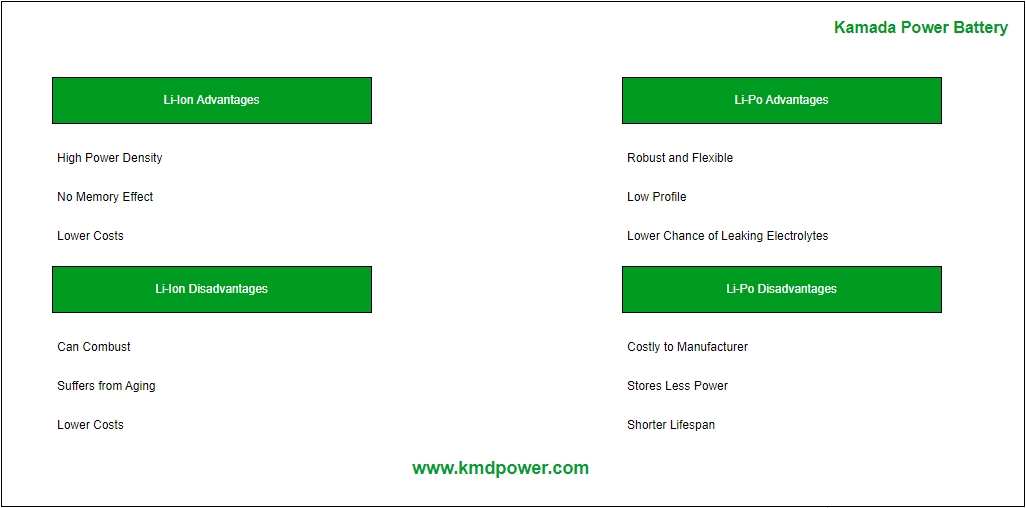
Lithium Ion vs Lithium Polymer Batteries Advantages and Disadvantages Comparison Picture
Lithium-ion (Li-ion) batteries and lithium polymer (LiPo) batteries are two mainstream battery technologies, each with distinct characteristics that directly impact the user experience and value in practical applications.
Firstly, lithium polymer batteries excel in energy density due to their solid-state electrolyte, typically reaching 300-400 Wh/kg, far surpassing the 150-250 Wh/kg of lithium-ion batteries. This means you can use lighter and thinner devices or store more energy in devices of the same size. For users who are often on the go or require extended usage, this translates to longer battery life and more portable devices.
Secondly, lithium polymer batteries have a longer cycle life, usually ranging from 1500-2000 charge-discharge cycles, compared to 500-1000 cycles for lithium-ion batteries. This not only extends the lifespan of devices but also reduces the frequency of battery replacements, thereby lowering maintenance and replacement costs.
Fast charging and discharging capabilities are another notable advantage. Lithium polymer batteries support charging rates of up to 2-3C, allowing you to obtain sufficient energy in a short time, significantly reducing waiting time and enhancing device availability and user convenience.
Additionally, lithium polymer batteries have a relatively low self-discharge rate, typically less than 1% per month. This means you can store backup batteries or devices for longer periods without frequent charging, facilitating emergency or backup use.
In terms of safety, the use of solid-state electrolytes in lithium polymer batteries also contributes to higher safety and lower risks.
However, the cost and flexibility of lithium polymer batteries may be factors for consideration for some users. Due to its technological advantages, lithium polymer batteries are generally more expensive and offer less design freedom compared to lithium-ion batteries.
In summary, lithium polymer batteries offer users a more portable, stable, efficient, and environmentally friendly energy solution due to their high energy density, long lifespan, fast charging and discharging capabilities, and low self-discharge rate. They are particularly suitable for applications requiring long battery life, high performance, and safety.
Quick Comparison Table of Lithium Ion vs Lithium Polymer Batteries
| Comparison Parameter | Lithium-Ion Batteries | Lithium Polymer Batteries |
|---|---|---|
| Electrolyte Type | Liquid | Solid |
| Energy Density (Wh/kg) | 150-250 | 300-400 |
| Cycle Life (Charge-Discharge Cycles) | 500-1000 | 1500-2000 |
| Charging Rate (C) | 1-2C | 2-3C |
| Self-Discharge Rate (%) | 2-3% per month | Less than 1% per month |
| Environmental Impact | Moderate | Low |
| Stability and Reliability | High | Very High |
| Charge/Discharge Efficiency (%) | 90-95% | Above 95% |
| Weight (kg/kWh) | 2-3 | 1-2 |
| Market Acceptance & Adaptability | High | Growing |
| Flexibility and Design Freedom | Moderate | High |
| Safety | Moderate | High |
| Cost | Moderate | High |
| Temperature Range | 0-45°C | -20-60°C |
| Recharge Cycles | 500-1000 cycles | 500-1000 cycles |
| Eco-Sustainability | Moderate | High |
(Tips: Actual performance parameters may vary due to different manufacturers, products, and usage conditions. Therefore, when making decisions, it is recommended to refer to the specific technical specifications and independent test reports provided by manufacturers.)
How to Quickly Assess Which Battery is Right for You
Individual Customers: How to Quickly Evaluate Which Battery to Buy
Case: Buying an Electric Bicycle Battery
Imagine you are considering buying an electric bicycle, and you have two battery options: Lithium-ion battery and Lithium Polymer battery. Here are your considerations:
- Energy Density: You want your electric bicycle to have a longer range.
- Cycle Life: You don’t want to replace the battery frequently; you want a long-lasting battery.
- Charge and Discharge Speed: You want the battery to charge quickly, reducing wait time.
- Self-discharge Rate: You plan to use the electric bicycle occasionally and want the battery to retain charge over time.
- Safety: You care deeply about safety and want the battery to not overheat or explode.
- Cost: You have a budget and want a battery that offers good value for money.
- Design Flexibility: You want the battery to be compact and not take up too much space.
Now, let’s combine these considerations with the weightings in the evaluation table:
| Factor | Lithium-ion Battery (0-10 points) | Lithium Polymer Battery (0-10 points) | Weight Score (0-10 points) |
|---|---|---|---|
| Energy Density | 7 | 10 | 9 |
| Cycle Life | 6 | 9 | 8 |
| Charge and Discharge Speed | 8 | 10 | 9 |
| Self-discharge Rate | 7 | 9 | 8 |
| Safety | 9 | 10 | 9 |
| Cost | 8 | 6 | 7 |
| Design Flexibility | 9 | 7 | 8 |
| Total Score | 54 | 61 |
From the table above, we can see that the Lithium Polymer battery has a total score of 61 points, while the Lithium-ion battery has a total score of 54 points.
Based on your needs:
- If you prioritize energy density, charge and discharge speed, and safety, and can accept a slightly higher cost, then choosing Lithium Polymer battery may be more suitable for you.
- If you are more concerned about cost and design flexibility, and can accept a lower cycle life and slightly slower charge and discharge speed, then Lithium-ion battery might be more appropriate.
This way, you can make a more informed choice based on your needs and the evaluation above.
Business Customers: How to Quickly Assess Which Battery to Procure
In the context of home energy storage battery applications, distributors will pay more attention to battery longevity, stability, safety, and cost-effectiveness. Here’s an evaluation table considering these factors:
Case: Choosing a Battery Supplier for Home Energy Storage Battery Sales
When installing home energy storage batteries for a large number of users, distributors need to consider the following key factors:
- Cost-effectiveness: Distributors need to provide a battery solution with high cost-effectiveness.
- Cycle Life: Users want batteries with a long lifespan and high charge and discharge cycles.
- Safety: Safety is particularly important in a home environment, and batteries should have excellent safety performance.
- Supply Stability: Suppliers should be able to provide stable and continuous battery supply.
- Technical Support and Service: Offer professional technical support and after-sales service to meet user needs.
- Brand Reputation: The supplier’s brand reputation and market performance.
- Installation Convenience: Battery size, weight, and installation method are important to both users and distributors.
Considering the above factors and assigning weights:
| Factor | Lithium-ion Battery (0-10 points) | Lithium Polymer Battery (0-10 points) | Weight Score (0-10 points) |
|---|---|---|---|
| Cost-effectiveness | 7 | 6 | 9 |
| Cycle Life | 8 | 9 | 9 |
| Safety | 7 | 8 | 9 |
| Supply Stability | 6 | 8 | 8 |
| Technical Support and Service | 7 | 8 | 8 |
| Brand Reputation | 8 | 7 | 8 |
| Installation Convenience | 7 | 6 | 7 |
| Total Score | 50 | 52 |
From the table above, we can see that the Lithium Polymer battery has a total score of 52 points, while the Lithium-ion battery has a total score of 50 points.
Therefore, from the perspective of choosing a supplier for a large number of home energy storage battery users, the Lithium Polymer battery may be the better choice. Despite its slightly higher cost, considering its cycle life, safety, supply stability, and technical support, it might offer users a more reliable and efficient energy storage solution.
What is a Lithium-ion Battery?
Lithium-ion Battery Overview
A lithium-ion battery is a rechargeable battery that stores and releases energy by moving lithium ions between the positive and negative electrodes. It has become the primary power source for many mobile devices (such as smartphones, laptops) and electric vehicles (such as electric cars, electric bicycles).
Structure of Lithium-ion Battery
- Positive Electrode Material:
- The positive electrode of a lithium-ion battery typically uses lithium salts (such as lithium cobalt oxide, lithium nickel manganese cobalt oxide, etc.) and carbon-based materials (such as natural or synthetic graphite, lithium titanate, etc.).
- The choice of positive electrode material has a significant impact on the battery’s energy density, cycle life, and cost.
- Negative Electrode (Cathode):
- The negative electrode of a lithium-ion battery typically uses carbon-based materials like natural or synthetic graphite.
- Some high-performance lithium-ion batteries also use materials like silicon or lithium metal as the negative electrode to increase the battery’s energy density.
- Electrolyte:
- Lithium-ion batteries use a liquid electrolyte, typically lithium salts dissolved in organic solvents, such as lithium hexafluorophosphate (LiPF6).
- The electrolyte serves as a conductor and facilitates the movement of lithium ions, determining the battery’s performance and safety.
- Separator:
- The separator in a lithium-ion battery is primarily made of microporous polymer or ceramic materials, designed to prevent direct contact between the positive and negative electrodes while allowing the passage of lithium ions.
- The choice of separator significantly affects the battery’s safety, cycle life, and performance.
- Enclosure and Seal:
- The enclosure of a lithium-ion battery is typically made of metal materials (such as aluminum or cobalt) or special plastics to provide structural support and protect internal components.
- The seal design of the battery ensures that the electrolyte does not leak and prevents external substances from entering, maintaining the battery’s performance and safety.
Overall, lithium-ion batteries achieve good energy density, cycle life, and performance through their complex structure and carefully selected material combinations. These features make lithium-ion batteries the mainstream choice for modern portable electronic devices, electric vehicles, and energy storage systems. Compared to lithium polymer batteries, lithium-ion batteries have certain advantages in energy density and cost-effectiveness but also face challenges in safety and stability.
Principle of Lithium-ion Battery
- During charging, lithium ions are released from the positive electrode (anode) and move through the electrolyte to the negative electrode (cathode), generating an electric current outside the battery to power the device.
- During discharging, this process is reversed, with lithium ions moving from the negative electrode (cathode) back to the positive electrode (anode), releasing the stored energy.
Advantages of Lithium-ion Battery
1. High Energy Density
- Portability and Lightweight: The energy density of lithium-ion batteries is typically in the range of 150-250 Wh/kg, allowing portable devices like smartphones, tablets, and laptops to store a large amount of energy within a relatively lightweight volume.
- Long-lasting Use: High energy density enables devices to operate for longer periods within limited space, meeting the needs of users for extended outdoor or prolonged use, providing longer battery life.
2. Long Life and Stability
- Economic Benefits: The typical lifespan of lithium-ion batteries ranges from 500-1000 charge-discharge cycles, meaning fewer battery replacements and thus reducing the overall ownership cost.
- Stable Performance: Battery stability means consistent performance and reliability throughout its lifespan, reducing the risk of performance degradation or failure due to battery aging.
3. Fast Charging and Discharging Capability
- Convenience and Efficiency: Lithium-ion batteries support fast charging and discharging, with typical charging speeds reaching 1-2C, meeting modern users’ demands for quick charging, reducing wait times, and improving daily life and work efficiency.
- Adaptable to Modern Life: The fast charging feature meets the fast and convenient charging needs in modern life, especially during travel, work, or other occasions requiring quick battery replenishment.
4. No Memory Effect
- Convenient Charging Habits: Without a noticeable “memory effect,” users can charge at any time without the need for periodic full discharges to maintain optimal performance, reducing the complexity of battery management.
- Maintaining High Efficiency: No memory effect means lithium-ion batteries can continuously provide efficient, consistent performance without complex charge-discharge management, reducing the maintenance and management burden on users.
5. Low Self-discharge Rate
- Long-term Storage: The self-discharge rate of lithium-ion batteries is typically 2-3% per month, meaning minimal loss of battery charge over extended periods of non-use, maintaining high charge levels for standby or emergency use.
- Energy Saving: Low self-discharge rates reduce energy loss in unused batteries, saving energy and reducing environmental impact.
Disadvantages of Lithium-ion Battery
1. Safety Issues
Lithium-ion batteries pose safety risks such as overheating, combustion, or explosion. These safety issues may increase risks to users during battery use, potentially causing harm to health and property, thus requiring enhanced safety management and monitoring.
2. Cost
The production cost of lithium-ion batteries typically ranges from $100-200 per kilowatt-hour (kWh). Compared to other types of batteries, this is a relatively high price, mainly due to the high-purity materials and complex manufacturing processes.
3. Limited Lifespan
The average lifespan of lithium-ion batteries typically ranges from 300-500 charge-discharge cycles. Under frequent and high-intensity use conditions, the battery’s capacity and performance may degrade more quickly.
4. Temperature Sensitivity
The optimal operating temperature for lithium-ion batteries is usually within 0-45 degrees Celsius. At excessively high or low temperatures, the battery’s performance and safety may be affected.
5. Charging Time
While lithium-ion batteries have fast charging capabilities, in some applications such as electric vehicles, fast charging technology still needs further development. Currently, some fast charging technologies can charge the battery to 80% within 30 minutes, but reaching 100% charge typically requires more time.
Industries and Scenarios Suitable for Lithium-ion Battery
Due to its superior performance characteristics, especially high energy density, lightweight, and no “memory effect,” lithium-ion batteries are suitable for various industries and application scenarios. Here are industries, scenarios, and products where lithium-ion batteries are more suitable:
Lithium-ion Battery Application Scenarios
- Portable Electronic Products with Lithium-ion Batteries:
- Smartphones and Tablets: Lithium-ion batteries, due to their high energy density and lightweight, have become the main power source for modern smartphones and tablets.
- Portable Audio and Video Devices: Such as Bluetooth headphones, portable speakers, and cameras.
- Electric Transportation Vehicles with Lithium-ion Batteries:
- Electric Cars (EVs) and Hybrid Electric Vehicles (HEVs): Due to their high energy density and long cycle life, lithium-ion batteries have become the preferred battery technology for electric and hybrid vehicles.
- Electric Bicycles and Electric Scooters: Increasingly popular in short-distance travel and urban transportation.
- Portable Power Supplies and Energy Storage Systems with Lithium-ion Batteries:
- Portable Chargers and Mobile Power Supplies: Providing additional power supply for smart devices.
- Residential and Commercial Energy Storage Systems: Such as home solar energy storage systems and grid storage projects.
- Medical Devices with Lithium-ion Batteries:
- Portable Medical Devices: Such as portable ventilators, blood pressure monitors, and thermometers.
- Medical Mobile Devices and Monitoring Systems: Such as wireless electrocardiogram (ECG) devices and remote health monitoring systems.
- Aerospace and Space Lithium-ion Batteries:
- Unmanned Aerial Vehicles (UAVs) and Aircraft: Due to the lightweight and high energy density of lithium-ion batteries, they are ideal power sources for drones and other lightweight aircraft.
- Satellites and Space Probes: Lithium-ion batteries are gradually being adopted in aerospace applications.
Well-known Products Using Lithium-ion Batteries
- Tesla Electric Car Batteries: Tesla’s lithium-ion battery packs use high-energy-density lithium-ion battery technology to provide long-range for its electric vehicles.
- Apple iPhone and iPad Batteries: Apple uses high-quality lithium-ion batteries as the main power source for its iPhone and iPad series.
- Dyson Cordless Vacuum Cleaner Batteries: Dyson’s cordless vacuum cleaners use efficient lithium-ion batteries, providing users with longer usage time and faster charging speed.
What is a Lithium Polymer Battery?
Lithium Polymer Battery Overview
A Lithium Polymer (LiPo) battery, also known as a solid-state lithium battery, is an advanced lithium-ion battery technology that uses solid-state polymer as an electrolyte instead of traditional liquid electrolytes. The core advantages of this battery technology lie in its enhanced safety, energy density, and stability.
Lithium Polymer Battery Principle
- Charging Process: When charging begins, an external power source is connected to the battery. The positive electrode (anode) accepts electrons, and at the same time, lithium ions detach from the positive electrode, migrate through the electrolyte to the negative electrode (cathode), and become embedded. Meanwhile, the negative electrode also accepts electrons, increasing the overall charge of the battery and storing more electrical energy.
- Discharging Process: During battery use, electrons flow from the negative electrode (cathode) through the device and return to the positive electrode (anode). At this time, the embedded lithium ions in the negative electrode begin to detach and return to the positive electrode. As lithium ions migrate, the battery’s charge decreases, and the stored electrical energy is released for device use.
Lithium Polymer Battery Structure
The basic structure of a Lithium Polymer battery is similar to that of a lithium-ion battery, but it uses different electrolytes and some materials. Here are the main components of a Lithium Polymer battery:
- Positive Electrode (Anode):
- Active Material: The positive electrode material is usually lithium-ion embedded materials, such as lithium cobalt oxide, lithium iron phosphate, etc.
- Current Collector: To conduct electricity, the anode is typically coated with a conductive current collector, such as copper foil.
- Negative Electrode (Cathode):
- Active Material: The active material of the negative electrode is also embedded, commonly using graphite or silicon-based materials.
- Current Collector: Similar to the anode, the cathode also requires a good conductive current collector, such as copper foil or aluminum foil.
- Electrolyte:
- Lithium Polymer batteries use solid-state or gel-like polymers as electrolytes, which is one of the main differences from traditional lithium-ion batteries. This electrolyte form provides higher safety and stability.
- Separator:
- The separator’s role is to prevent direct contact between the positive and negative electrodes while allowing lithium ions to pass through. This helps prevent battery short-circuiting and maintains battery stability.
- Enclosure and Seal:
- The battery’s exterior is typically made of metal or plastic casing, providing protection and structural support.
- The sealing material ensures that the electrolyte does not leak and maintains the battery’s internal environment stability.
Due to the use of solid-state or gel-like polymer electrolytes, Lithium Polymer batteries have high energy density, safety, and stability, making them a more attractive choice for certain applications compared to traditional liquid electrolyte lithium-ion batteries.
Advantages of Lithium Polymer Battery
Compared to traditional liquid electrolyte lithium-ion batteries, Lithium Polymer batteries have the following unique advantages:
1. Solid-State Electrolyte
- Enhanced Safety: Due to the use of a solid-state electrolyte, Lithium Polymer batteries significantly reduce the risk of overheating, combustion, or explosion. This not only improves the battery’s safety but also reduces potential hazards caused by leakage or internal short circuits.
2. High Energy Density
- Optimized Device Design: The energy density of Lithium Polymer batteries typically reaches 300-400 Wh/kg, significantly higher than the 150-250 Wh/kg of traditional liquid electrolyte lithium-ion batteries. This means that, for the same volume or weight, Lithium Polymer batteries can store more electrical energy, allowing devices to be designed thinner and lighter.
3. Stability and Durability
- Long Lifespan and Low Maintenance: Due to the use of solid-state electrolytes, Lithium Polymer batteries typically have a lifespan of 1500-2000 charge-discharge cycles, far exceeding the 500-1000 charge-discharge cycles of traditional liquid electrolyte lithium-ion batteries. This means that users can use devices for a longer time, reducing the frequency of battery replacement and related maintenance costs.
4. Fast Charging and Discharging Capability
- Improved User Convenience: Lithium Polymer batteries support high-speed charging, with charging speeds reaching up to 2-3C. This allows users to quickly obtain power, reduce waiting times, and enhance the efficiency of device use.
5. High Temperature Performance
- Wider Application Scenarios: The high-temperature stability of solid-state electrolytes allows Lithium Polymer batteries to perform well in a wider range of operating temperatures. This provides greater flexibility and reliability for applications that require operation in high-temperature environments, such as electric vehicles or outdoor equipment.
Overall, Lithium Polymer batteries provide users with higher safety, greater energy density, longer lifespan, and a wider range of applications, further meeting the needs of modern electronic devices and energy storage systems.
Disadvantages of Lithium Polymer Battery
- High Production Cost:
- The production cost of Lithium Polymer batteries is typically in the range of $200-300 per kilowatt-hour (kWh), which is a relatively high cost compared to other types of lithium-ion batteries.
- Thermal Management Challenges:
- Under overheating conditions, the heat release rate of Lithium Polymer batteries can be as high as 10°C/min, requiring effective thermal management to control battery temperature.
- Safety Issues:
- According to statistics, the safety accident rate of Lithium Polymer batteries is approximately 0.001%, which, although lower than some other battery types, still requires strict safety measures and management.
- Cycle Life Limitations:
- The average cycle life of Lithium Polymer batteries is usually in the range of 800-1200 charge-discharge cycles, which is affected by usage conditions, charging methods, and temperature.
- Mechanical Stability:
- The thickness of the electrolyte layer is typically in the range of 20-50 microns, making the battery more sensitive to mechanical damage and impact.
- Charging Speed Limitations:
- The typical charging rate of Lithium Polymer batteries is usually in the range of 0.5-1C, meaning that charging time may be limited, especially under high current or fast charging conditions.
Industries and Scenarios Suitable for Lithium Polymer Battery
Lithium Polymer Battery Application Scenarios
- Portable Medical Devices: Due to their high energy density, stability, and long lifespan, Lithium Polymer batteries are more widely used than lithium-ion batteries in portable medical devices such as portable ventilators, blood pressure monitors, and thermometers. These devices typically require a stable power supply for extended periods, and Lithium Polymer batteries can meet these specific needs.
- High-Performance Portable Power Supplies and Energy Storage Systems: Due to their high energy density, fast charging and discharging capabilities, and stability, Lithium Polymer batteries have more significant advantages in high-performance portable power supplies and large-scale energy storage systems, such as residential and commercial solar energy storage systems.
- Aerospace and Space Applications: Due to their lightweight, high energy density, and high-temperature stability, Lithium Polymer batteries have broader application scenarios than lithium-ion batteries in aerospace and space applications, such as unmanned aerial vehicles (UAVs), light aircraft, satellites, and space probes.
- Applications in Special Environments and Conditions: Due to the solid-state polymer electrolyte of Lithium Polymer batteries, which provides better safety and stability than liquid electrolyte lithium-ion batteries, they are more suitable for applications in special environments and conditions, such as high-temperature, high-pressure, or high-safety requirements.
In summary, Lithium Polymer batteries have unique advantages and application value in certain specific application fields, especially in applications that require high energy density, long lifespan, fast charging and discharging, and high safety performance.
Well-known Products Using Lithium Polymer Batteries
- OnePlus Nord Series Smartphones
- The OnePlus Nord series smartphones use Lithium Polymer batteries, allowing them to provide longer battery life while maintaining a slim design.
- Skydio 2 Drones
- The Skydio 2 drone uses high-energy-density Lithium Polymer batteries, providing it with over 20 minutes of flight time while maintaining a lightweight design.
- Oura Ring Health Tracker
- The Oura Ring health tracker is a smart ring that uses Lithium Polymer batteries, providing several days of battery life while ensuring the device’s slim and comfortable design.
- PowerVision PowerEgg X
- PowerVision’s PowerEgg X is a multifunctional drone that uses Lithium Polymer batteries, capable of achieving up to 30 minutes of flight time while having both land and water capabilities.
These well-known products fully demonstrate the widespread application and unique advantages of Lithium Polymer batteries in portable electronic products, drones, and health tracking devices.
Conclusion
In the comparison between lithium ion vs lithium polymer batteries, lithium polymer batteries offer superior energy density, longer cycle life, and enhanced safety, making them ideal for applications demanding high performance and longevity. For individual consumers prioritizing fast charging, safety, and willing to accommodate a slightly higher cost, lithium polymer batteries are the preferred choice. In business procurement for home energy storage, lithium polymer batteries emerge as a promising option due to their enhanced cycle life, safety, and technical support. Ultimately, the choice between these battery types depends on specific needs, priorities, and intended applications.


